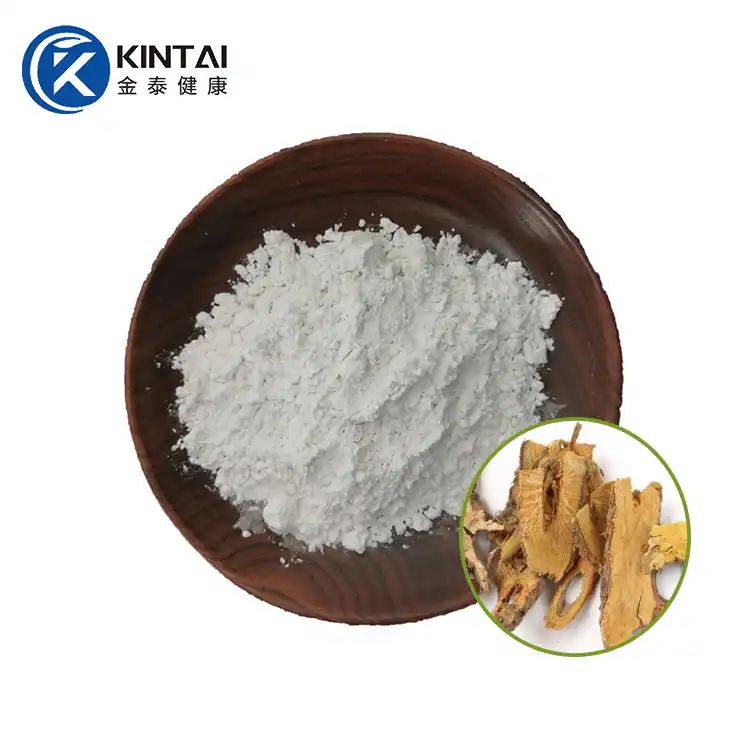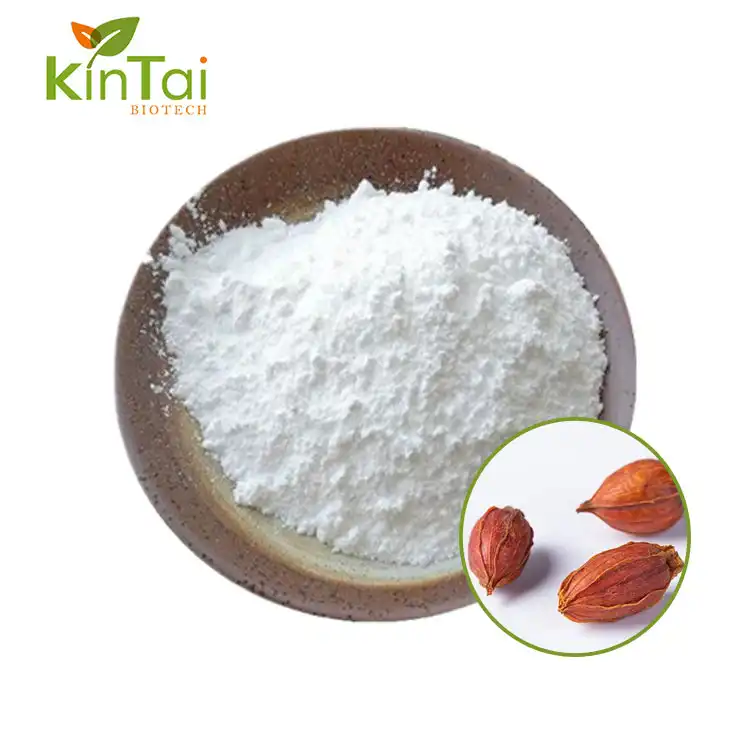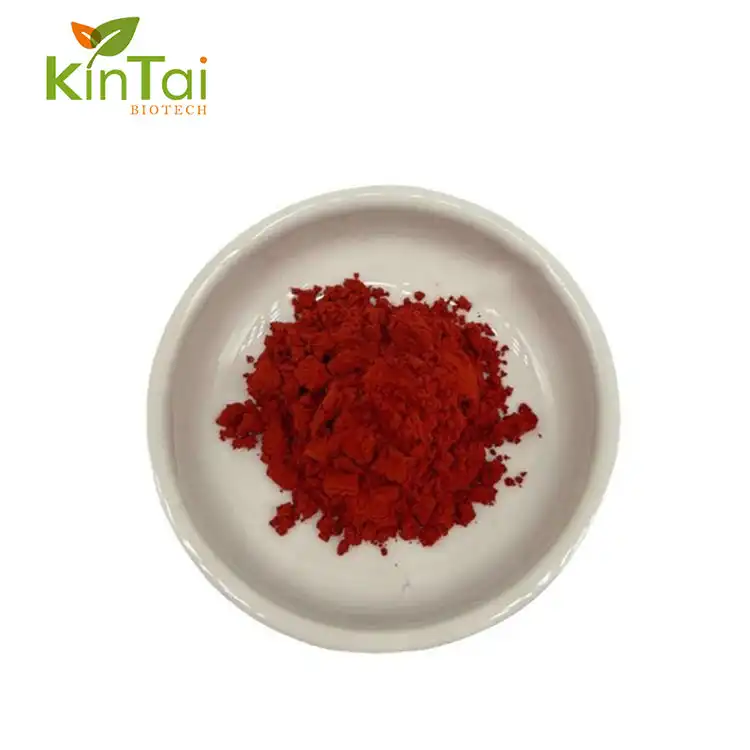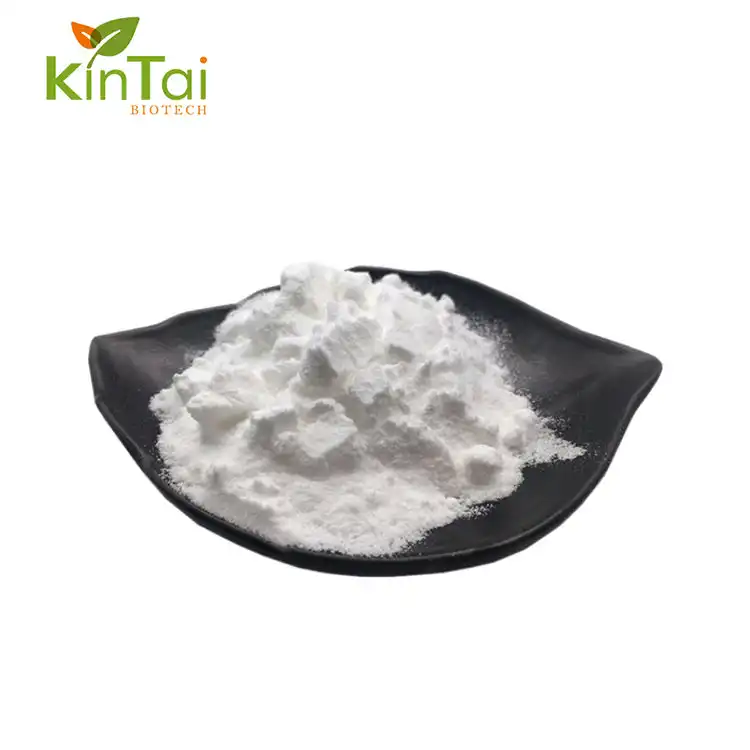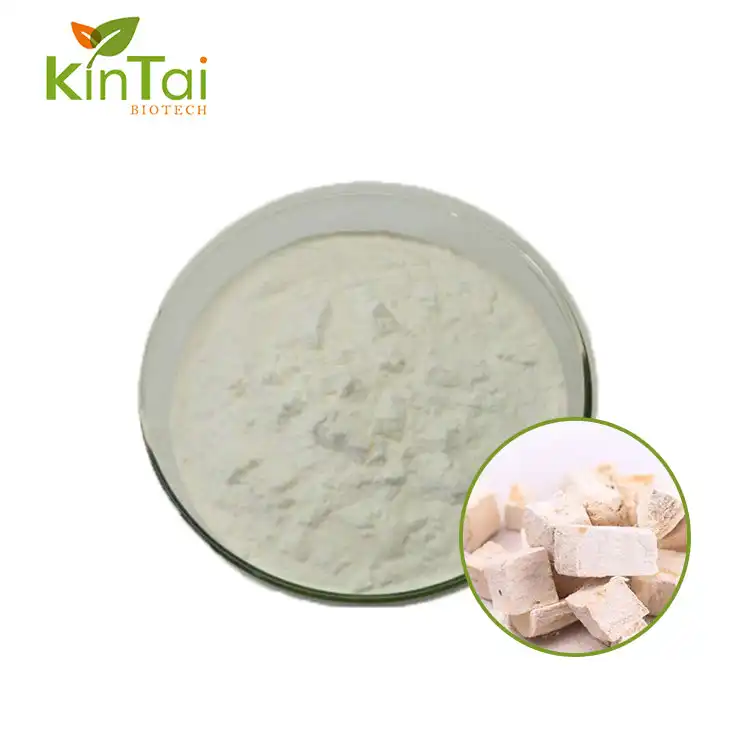Is the ferulic acid derived from natural sources or synthesized?
2024-09-25 10:11:14
Is the ferulic acid derived from natural sources or synthesized?
Ferulic acid powder, a phenolic compound found in the cell walls of plants, is eminent for its powerful cancer prevention agent properties. It is generally utilized in the corrective and drug businesses for its capacity to safeguard against oxidative pressure and UV radiation. This article dives into the starting points of ferulic acid, analyzing whether it is gotten from regular sources or integrated, and examines the ramifications of every strategy.
Understanding Ferulic Acid
Ferulic acid powder, portrayed by its compound construction of hydroxycinnamic acid, assumes a significant part in plant physiology, offering underlying help to cell walls and supporting safeguard against natural stressors. Its cancer prevention agent properties originate from its capacity to kill free extremists, hence decreasing oxidative harm to cells and tissues. This compound has collected huge consideration in exploration and industry for its potential medical advantages, including calming, hostile to malignant growth, and neuroprotective impacts. Besides, its strength and similarity with different fixings pursue it a well known decision in definitions for skincare items, dietary enhancements, and drugs.

Natural Sources of Ferulic Acid
Plant-Based Beginnings
Ferulic acid is normally happening in different plants, including grains like rice, wheat, and oats, as well as in products of the soil like tomatoes, eggplants, and sweet corn. The most elevated focuses are regularly found in the grain layer of grains, which is the reason rice wheat and wheat are generally utilized as normal hotspots for removing ferulic acid.

Extraction Interaction
The extraction of ferulic acid from plant sources includes a few stages. At first, the plant material goes through mechanical handling to separate the cell walls. This is trailed by dissolvable extraction, where solvents like ethanol or methanol are utilized to disintegrate the ferulic acid. The arrangement is then filtered through filtration and vanishing cycles to get concentrated ferulic acid.
Integrated Ferulic Acid
Synthetic Union
While Ferulic acid powder can be separated from normal sources, it can likewise be blended artificially. Substance combination includes the response of guaiacol with malonic acid within the sight of an impetus. This interaction yields ferulic acid through a progression of synthetic responses, taking into consideration huge scope creation free of rural yield varieties.
Biotechnology Approaches
Progressions in biotechnology have presented strategies for creating ferulic acid utilizing microbial aging. Explicit types of microbes or growths are designed to create ferulic acid from straightforward sugars or other natural substrates. This technique offers a manageable and versatile option in contrast to both plant extraction and synthetic union.
Comparing Natural and Synthesized Ferulic Acid
Purity: Natural Ferulic acid powder extracted from plants may contain impurities or vary in concentration depending on the source, while synthesized ferulic acid can be produced with higher purity levels, ensuring consistency in quality and efficacy.
Sustainability: Extracting ferulic acid from plants may raise concerns about sustainability and environmental impact, especially if large-scale harvesting leads to deforestation or depletion of natural resources. Synthesized ferulic acid offers a more controlled and potentially more sustainable production process.
Cost: Natural ferulic acid extraction can be more costly due to the need for plant cultivation, harvesting, and extraction processes. Synthesized ferulic acid may offer a more cost-effective alternative, especially for industries requiring large quantities of the compound.
Effectiveness: While both natural and synthesized ferulic acid exhibit antioxidant properties, there may be differences in bioavailability or stability between the two forms. Research comparing the effectiveness of natural and synthesized ferulic acid in various applications could provide insights into any potential differences.
Regulatory Considerations: Regulatory agencies may have specific requirements or restrictions regarding the use of natural versus synthesized ferulic acid in certain products or industries. Compliance with these regulations is essential for market access and consumer safety.
Consumer Perception: Some consumers may prefer products containing natural ingredients, perceiving them to be safer or more environmentally friendly. Others may prioritize efficacy and consistency, favoring products formulated with synthesized Ferulic acid powder for their standardized quality.
Supply Chain Stability: Natural ferulic acid availability may be subject to fluctuations in crop yields, weather conditions, or geopolitical factors affecting agricultural production. Synthesized ferulic acid production can offer more stability and reliability in the supply chain, ensuring uninterrupted manufacturing processes.
Applications of Ferulic Acid
Cosmetics and Skincare: Often used in anti-aging serums, moisturizers, and sunscreens for its antioxidant properties that protect against UV damage and free radicals.
Pharmaceuticals: Incorporated into medications and topical treatments for its anti-inflammatory and antioxidant effects, aiding in wound healing and skin repair.
Food Industry: Utilized as a natural preservative in food products to extend shelf life and prevent lipid oxidation, maintaining freshness.
Agricultural Sector: Employed in crop protection products to enhance plant defenses against environmental stressors and pathogens, promoting growth and yield.
Dietary Supplements: Taken orally as a supplement due to its potential health benefits, including antioxidant and anti-inflammatory properties, which may support overall health and wellness.
Biomedical Research: Used as a compound in research studies to investigate its therapeutic potential for various health conditions, including cardiovascular disease, cancer, and neurological disorders.
Textile Industry: Applied in textile processing as a UV absorber and antioxidant to improve the durability and UV resistance of fabrics, particularly in outdoor and sportswear.
Cosmetic Formulations: Integrated into hair care products like shampoos and conditioners to strengthen hair shafts, prevent breakage, and protect against environmental damage.

Conclusion
In conclusion, Ferulic acid powder can be derived from both natural sources and synthesized through chemical or biotechnological means. Each method has its advantages and drawbacks concerning purity, environmental impact, cost, and scalability. Understanding these factors is crucial for industries relying on ferulic acid to make informed decisions about their sourcing strategies. As biotechnology advances, it may provide increasingly sustainable and efficient ways to produce high-purity ferulic acid, meeting the growing demand in various sectors.If you want to learn more about it, welcome to contact us: info@kintaibio.com.
References
National Center for Biotechnology Information
ScienceDirect
PubMed
Cosmetics Info


